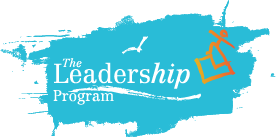We are all in the business of utilizing resources in the best ways possible. You may also be on the hunt for new resources that help your business or school run more effectively. The problem is that sometimes the best resources are hard to come by and we sometimes under-utilize resources and miss opportunities.
Below is a short guide to obtaining and keeping tracking of much needed funding, services or merchandise.
Mapping Out Your Budget
Start by going through every item on your budget... twice. The second pass will help you uncover tricky areas. While this goes without saying, make sure you’re plotting out the fiscal year by keying in on what funding needs to be spent by when.
Make a list of what needs to get done verses how much money you have. Put items into four categories suggested in the Eisenhower Matrix:
- Important and Urgent – These items must absolutely get done and prioritized first.
- Important and Not Urgent – Intentionally plan for these items. You have more time to get to these done but they must absolutely happen.
- Non- Important and Urgent – These items can be delegated to other staff so that you’re free to work on Important and Urgent items.
- Not Important and Not Urgent – Eliminate these items immediately.
These categories will help you organize what needs to get done so that you can clearly see what resources you actually need. You don’t want to spin your wheels on ideas that will never pan out or that you can delegate to other staff.
Taking Stock of Current Resources
Make a list of all the grants and resources you currently have. Have someone else in your organization or school work with you on this so that you don’t miss anything. Funders like to see that you know how to manage grant funding. This makes you a viable receiver.
Check to see if your current grants or resources provide ancillary support. Some grant funding come with assistance for awardees to help navigate and maximize current resources. For instance, the 21st Century Community Learning Centers Grant for after school programs provides professional development for community based organizations. Some PDs even include grant writing workshops.
Keep a running list of unique and qualifying information about your school or organization. This makes you attractive to entities that provide additional resources. Some attributes may include:
- Minority owned business
- Women owned business
- Specialty in serving high need areas
- High population of students in temporary housing
Create a Resource Group and Delegate Tasks
Put together a team to support your efforts. Take inventory of your available manpower to see who is fit to take on the task of obtaining resources. Schedule meetings in advance so that you prioritize this group.
Utilize Stakeholders
Look at who in your community can help. Include parents, business owners and any groups affiliated with the school or organization. Then research your local politicians. Reach out to their offices to see how they can continue to support their community. Using your list of resources and unique qualities of your school or organization will come in handy.
Create Alliances
Exchanging information with others in your network of folks will provide great intel on other streams of funding and initiatives. Look at different groups that you can join within education or the arts to meet new and interesting people. Try to connect to department of education departments that provide different services like college awareness or health and wellness. By getting acquainted with these various departments you can see where your organization or school can fit in to receive appropriate funding.
Untapped Resources
Research companies that give away merchandise, supplies, equipment or services. Warby Parker, Apple and Bombas are just a few companies that give away merchandise and services for free. There are a lot of free resources out there, if you take the time to research the options.
And Finally... Think Outside the Box
What wild and crazy ideas can you come up with? You never know till you try. Think boldly and make your visions come to life. Start by dreaming big.
Though your budget might seem tight, and your resources might feel thin, there are opportunities to expand and maximize your resources all around you.



Comments [0]
Click here to read/write comments